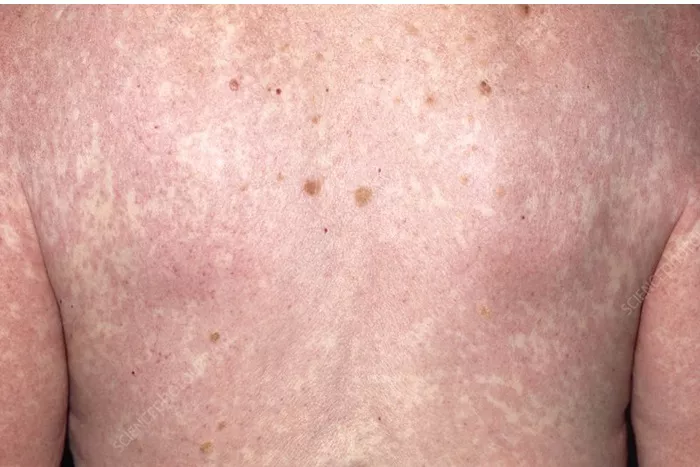Scar revision is a dermatological or surgical procedure aimed at improving the appearance of scars and helping them blend more seamlessly with the surrounding skin. Techniques can range from minimally invasive procedures like laser therapy and microdermabrasion to more intensive surgical interventions. Regardless of the type of procedure, proper post-operative care is crucial to achieving the best results and minimizing the risk of complications.
This article will explore the essential do’s and don’ts following scar revision surgery. By understanding what to avoid during the healing process, patients can ensure optimal outcomes and prevent the recurrence or worsening of scarring.
Do Not Expose the Scar to Direct Sunlight
One of the most critical instructions following scar revision is to avoid direct sunlight exposure. The healing skin is highly sensitive and susceptible to the damaging effects of UV rays, which can lead to hyperpigmentation and discoloration.
Why Sun Protection is Crucial:
Prevents Darkening of the Scar: Fresh scars are prone to becoming darker if exposed to sunlight, due to an increase in melanin production.
Reduces Risk of Sunburn: Healing skin is more vulnerable to burning, which can exacerbate scarring.
Maintains Visibility of Improvements: Keeping the scar out of sunlight helps maintain the improvements achieved by the revision surgery.
Patients are advised to use a broad-spectrum sunscreen with an SPF of 30 or higher, wear protective clothing, and avoid sun exposure, especially between 10 AM and 4 PM when UV radiation is strongest.
Avoid Excessive Physical Activity
Strenuous physical activities can negatively impact the healing of a scar. Such activities can stretch the skin, potentially tearing the new tissue that is forming.
Risks of High-Intensity Activities:
Increased Swelling: Physical exertion can lead to increased blood flow, exacerbating swelling around the scar site.
Risk of Re-opening the Wound: Activities that involve stretching or extensive movement can cause the wound to reopen or the stitches to come loose.
Delay in Healing: Continuous strain on the healing scar can prolong the recovery process and might lead to more noticeable scarring.
It is generally recommended to avoid heavy lifting, stretching exercises, and high-impact sports for a specified period, as advised by the healthcare provider.
Do Not Ignore Signs of Infection
Infection is a risk associated with any surgical procedure, including scar revision. Recognizing and addressing signs of infection promptly is vital to prevent further complications.
Signs of Infection to Watch For:
Increased Redness and Swelling: While some redness and swelling are normal, an increase after the initial days of healing can be a warning sign.
Pus or Unusual Discharge: Any green or yellow discharge, or significant bleeding, is not typical and should be examined by a physician.
Fever and Chills: Systemic symptoms like fever or chills can indicate that an infection is spreading.
Unusual Pain or Tenderness: While some discomfort is normal, pain that intensifies over time should be evaluated.
Patients should follow their doctor’s advice on wound care meticulously and report any unusual symptoms immediately.
Avoid the Use of Non-Approved Topical Products
The application of any creams, ointments, or other topical products that are not explicitly approved by the attending physician can adversely affect the healing process.
Potential Consequences of Non-Approved Topicals:
Chemical Reactions: Some products may react chemically with the healing tissues, causing irritation or allergic reactions.
Delay in Healing: Certain ingredients can interfere with the body’s natural healing processes.
Worsening of Scar Appearance: Some products might exacerbate the scarring by causing additional irritation or discoloration.
Always consult with a healthcare provider before applying anything new to the scar area to ensure it is safe and suitable for your skin type and the specific nature of your scar revision.
Do Not Smoke
Smoking significantly impairs the body’s ability to heal, decreasing blood flow and bringing fewer nutrients and oxygen to the wound site. Nicotine constricts blood vessels, and smoking also introduces harmful toxins that can delay healing and increase the risk of complications.
Impact of Smoking on Wound Healing:
Reduced Blood Flow: Constricted vessels result in less oxygen and fewer nutrients reaching the wound, crucial factors for healing.
Increased Risk of Infection: Impaired immune function from smoking can increase susceptibility to infections.
Poorer Scar Outcomes: Smoking can result in thicker, more pronounced scars due to its impact on collagen production and the healing process.
Patients are strongly advised to stop smoking well in advance of a scar revision procedure and throughout the recovery period.
Do Not Neglect Proper Nutrition and Hydration
Healing from any surgery, including scar revision, requires proper nutrition and adequate hydration. Nutrients such as proteins, vitamins (particularly vitamin C and vitamin A), and minerals like zinc play crucial roles in wound healing.
Benefits of Good Nutrition and Hydration:
Supports Skin Regeneration: Adequate protein intake is essential for the repair of skin tissues.
Enhances Immune Function: A well-nourished body can fight off potential infections more effectively.
Improves Overall Skin Health: Hydration keeps the skin supple and responsive to healing, reducing the likelihood of dry, brittle areas that can crack and interfere with scar healing.
Ensure a balanced diet rich in fruits, vegetables, lean proteins, and whole grains, and drink plenty of water to support your body’s healing capabilities.
Do Not Pick or Scratch the Scar
It can be tempting to touch, pick, or scratch a healing scar, especially if it itches, which is a common sensation as the skin heals. However, doing so can reopen the wound, introduce bacteria, and lead to worse scarring.
Consequences of Disturbing the Scar:
Increased Risk of Infection: Hands carry a lot of bacteria, which can be transferred to the wound site.
Permanent Scarring: Picking at the scar can remove the new tissue, potentially leading to more significant, permanent scarring.
Patients should follow their doctor’s advice on how to care for the skin during the healing phase, including the use of approved moisturizers or anti-itch creams if necessary.
Conclusion: Maximizing Scar Revision Outcomes
Post-operative care after scar revision is as crucial as the procedure itself. By avoiding these critical mistakes—exposure to sunlight, engaging in strenuous activities, ignoring signs of infection, using non-approved topical products, smoking, neglecting nutrition and hydration, and picking at the scar—patients can significantly enhance their healing process and improve the final appearance of their scars. Always follow your healthcare provider’s specific instructions and attend all follow-up appointments to ensure the best possible outcome from your scar revision procedure.
[inline_related_posts title=”You Might Be Interested In” title_align=”left” style=”list” number=”6″ align=”none” ids=”8019,7962,7900″ by=”categories” orderby=”rand” order=”DESC” hide_thumb=”no” thumb_right=”no” views=”no” date=”yes” grid_columns=”2″ post_type=”” tax=””]
































